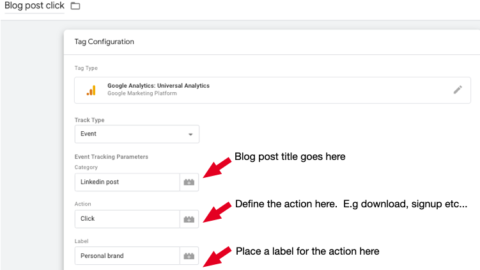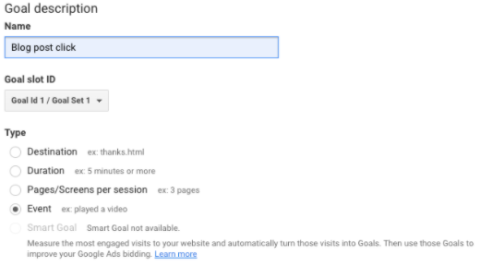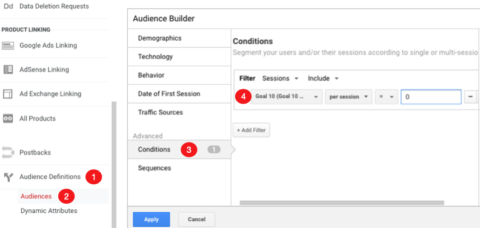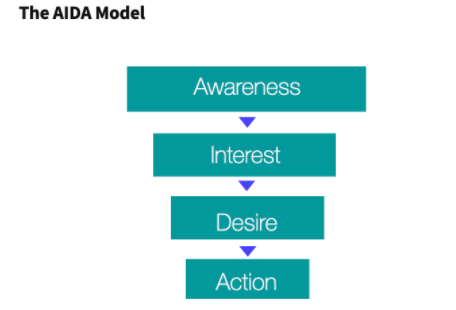Conversion rate optimization (CRO) is not for the faint of heart. It’s tough to produce website experiences that deliver results consistently.
It’s essential, though. You’ve invested a lot of resources, time, and budget into getting the best possible audience to your website.
Failing to do everything you can to convert them is leaving money on the table.
Over the last decade in digital marketing, I’ve learned a few creative CRO tactics that can dramatically increase your odds of success.
Check out these three unconventional CRO tips that can help add consistent growth to your bottom line.
1. Create Augmented Reality Experiences
Have you ever gone to the mall to try on clothing? Brick-and-mortar stores know if they get you into the fitting room, the product is far more likely to be sold.
But how do you enable customers to try on items when you are an ecommerce brand?
MAC Cosmetics and several other ecommerce brands use AR (augmented reality) technology to enable potential buyers to try on products virtually.
Ecommerce brands usually place a CTA button on product description pages that look like this:
 Screenshot by author, December 2021
Screenshot by author, December 2021Place yourself in the consumer’s shoes. Maybe your first thought at this point is how is it possible to try on a product?
So your curiosity gets the best of you, and you decide to click. Upon clicking, your camera activates. You may be a little shocked or scared because your camera is triggered (or perhaps you are excited – who am I to judge?).
Regardless of what you’re feeling, you will find different lipstick shades that you were previously browsing directly transposed on your lips.
Or, perhaps if you shop at Wayfair, you will see furniture directly in your living room.
It is not unreasonable for ecommerce brands to see as high as a 94% conversion lift on average from AR technology.
Pretty shocking, right? However, it’s time to say goodbye to low single-digit numbers being the benchmark of success for ecommerce conversion rates.
The only drawback to AR technology is the upfront investment. But you can surely recoup your investment given the conversion rates.
For ecommerce brands not leveraging this technology, you leave money on the table.
Furthermore, beyond generating revenue, you are also losing the opportunity to connect with your audience.
2. Perfect Your Micro-Conversion Retargeting
GTM (Google Tag Manager) is one of the most robust and underutilized tools for increasing conversion rates. Brands that leverage micro-conversion retargeting win big time.
What Is A Micro Conversion?
Micro conversions are small steps towards the path of completing your primary conversion goal (or macro conversion). Here is an example of a conversion journey for a social post scheduling tool.
 Image created by author, December 2021
Image created by author, December 2021Retargeting based on a product/service pageview versus brands leveraging mico-conversion retargeting from a specific click event is night and day.
Each stage in the journey presents an opportunity for a retargeting message based on a click event that occurred within each step.
For example, a person lands on the first step (reads a blog post) in the journey illustrated above, within the blog post there is a link to another post that states “personal brand.”
Furthermore, let’s say the article on personal branding speaks about building a personal brand on LinkedIn, specifically. Once a click event is triggered on the link, which states “personal brand.”
You can retarget the person that clicked the link with a customized message that states, “Learn how to build a personal brand on LinkedIn using our social posting scheduling tool ”
The person who has clicked the micro-conversion link has self-identified they are interested in building a personal brand. The link within the blog post talks about Linkedin.
Your service is a social media post scheduling software that can aid the potential customer with the goal of establishing a brand on LinkedIn.
The alignment in messaging is perfect to retarget users that have not performed the next action in your funnel.
The devil is in the details. Once the person has seen the retargeting message, you can quickly move them through the funnel – one personalized message at a time.
How To Setup A Micro-Conversion Click Event
Setting up a micro-conversion click event is straightforward and can be accomplished in five minutes or less.
To set up a click event, you will first need to copy and paste the Google Tag Manager code on your website. Then, once installed, you will have to set up a tag that looks like this.
 Screenshot from Google Analytics, December 2021
Screenshot from Google Analytics, December 2021Next, you need to define a trigger rule in GTM. The trigger will fire your tag based on the rules you define.
For example, the click event rule within the trigger for this tag would look like this.
 Screenshot from Google Tag Manager, December 2021
Screenshot from Google Tag Manager, December 2021Once your click-based rule is set up to retarget people back to your site, you will need to set up an event-based goal within Google Analytics.
How To Set Up An Event-Based Goal
To set up an event-based goal, navigate to your goals within GA, set up a new goal, and click the toggle named event.
 Screenshot from Google Tag Manager, December 2021
Screenshot from Google Tag Manager, December 2021Next, replicate the tag setup performed in GTM within Google Analytics verbatim.
 Screenshot from Google Analytics, December 2021
Screenshot from Google Analytics, December 2021At this point, you have performed the following:
- Set up your tag.
- Defined your rules for the tag.
- Set up your event-based Google Analytics goal.
Next, you will need to define your audience in Google Analytics for your retargeting campaign based on your event-based goal.
If you don’t currently have a Google Ads retargeting tag setup, you will need to copy and paste the code on your website.
How To Set Up Retargeting Click Events
Follow the steps below to set up your audience based on an event-based goal.
- Navigate to admin > click on Audience Definitions.
- Click on Audience under audience definitions.
- Click Conditions.
- Select the event-based goal you set up for the click event.
 Screenshot from Google Analytics, December 2021
Screenshot from Google Analytics, December 2021That’s it. Once your audience is defined, you will have the ability to set up differentiated ad groups in Google Ads to customize your messaging from the data collected from your audience.
To achieve the best results with micro-conversions, I recommend retargeting prospects during the primary steps in the journey based on the AIDA model.
 Created by author, December 2021
Created by author, December 2021Once potential prospects have become aware of your product and have triggered an event-based click.
If the prospect returns from your retargeting efforts, they have expressed interest and may sign up for a newsletter.
At this point, if that occurs you should untie retargeting with remarketing. Let your remarketing email campaigns work magic to create the desire for your offering.
Remember that your prospects will be sent back to your site during your email remarketing campaigns.
You can further utilize intent-based click data to customize your email campaigns to test headlines and incentives.
3. Tap Into The Power Of Dynamic Video Personalization
Videos are here to stay. As we all get more acclimated to the presence of video, it will present more opportunities to utilize video in more creative ways.
I am sure you have seen exit-intent popups that state something along the lines of “Wait before you leave, take 10% off your order today.”
Triggering a popup experience produces results, which is why you should be asking yourself how you can further iterate on this experience.
Take a look at this unconventional and highly creative exit-intent popup from Voluum. You are encouraged to book a demo with a man positioning an arrow to click the primary CTA within the video.
 Screenshot from Voluum, December 2021
Screenshot from Voluum, December 2021But let’s say you click the CTA that states no thank you. Now you are presented with a sad group of people.
 Screenshot from Voluum, December 2021
Screenshot from Voluum, December 2021Perhaps you would reconsider trying the service out. After all, what do you have to lose? It’s free. Now you are celebrated once you schedule a demo call.
 Screenshot from Voluum, December 2021
Screenshot from Voluum, December 2021I think everyone can agree that this is a pretty creative approach to an exit-intent popup. But beyond the creativity of presenting this experience, the communication of emotional elements is genius.
Customers that establish an emotional connection with a brand have a 306% higher lifetime value. Therefore, using EMV (Emotional Marketing Value) in your marketing is critical.
To create this experience, you can use a WordPress plugin or hire a developer.
If you decide to go with a developer, tell your developer that you would like videos populated from a hover state.
The keyword here is hover state. That is the technology behind this experience.
Next Steps For CRO Success
I implore you to test all three tactics discussed. The first step should be diving into your analytics to pinpoint trends in your historical data.
Look at your goals and user flow path to brainstorm ideas with your team. Next, sit down with your team and define a P.I.E index.
P.I.E stands for potential, importance, and ease. Conversion rate optimization tests will be harder to execute but could produce results that exceed your expectations.
Important CRO tests are high impact and have a lower level of effort to execute. Ease is effortless to implement and does not require heavy lifting.
You have a P.I.E index formed already from today’s discussion. The potential item is augmented reality because of the cost investment. The important item would be micro-conversions since this tactic is high impact and low effort.
Lastly, ease is video personalization since you can find a plugin that can execute this test at the click of a button.
Cheers to your conversion rate optimization success!
More resources:
- How to Choose the Best CRO Agency: 7 Traits They Share
- 9 Ways To Improve PPC Campaigns With Customer Information
- Is Your PPC Agency Wasting Your Budget?
Featured Image: Quarta/Shutterstock





![AI Overviews: We Reverse-Engineered Them So You Don't Have To [+ What You Need To Do Next]](https://www.searchenginejournal.com/wp-content/uploads/2025/04/sidebar1x-455.png)